Answer Podcast
Video:
The post QA on racism Q 9 Is racial injustice caused by past karma? appeared first on The Spiritual Scientist.
Websites from the ISKCON Universe
Answer Podcast
Video:
The post QA on racism Q 9 Is racial injustice caused by past karma? appeared first on The Spiritual Scientist.
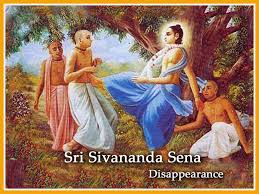
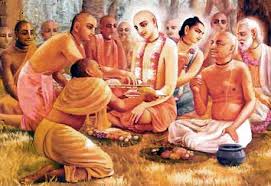
Sivananda Sena, the twenty-fourth branch of the Caitanya tree, was an extremely confidential servant of Lord Caitanya Mahaprabhu. Everyone who went to Jagannatha Puri to visit Lord Caitanya took shelter and guidance from Sri Sivananda Sena.
Srila Sivananda Sena has been described by Srila Bhaktisiddhanta Sarasvati Maharaja as follows: ”Sivananda Sena was a resident of Kumarahatta, which is also known as Halisahara, and was a great devotee of the Lord.”
About one and a half miles from Kumarahatta is another village, known as Kancadapada, in which there are Gaura-Gopala Deities installed by Sivananda Sena, who also established a temple of Krsnaraya that is still existing.
Sivananda Sena was the father of Paramananda Sena, who was also known as Puri dasa or Kavi-karnapura. Paramananda Sena wrote in his Gaura-ganodesa-dipika that two of the gopis of Vrndavana, whose former names were Vira and Duti, combined to become his father.
Srila Sivananda Sena guided all the devotees of Lord Caitanya who went from Bengal to Jagannatha Puri, and he personally bore all the expenses for their journey.
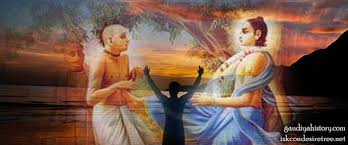
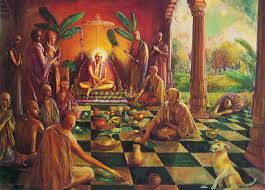

(Kadamba Kanana Swami, 4 June 2020, Radhadesh, Belgium, Caitanya Caritamrta Lecture)
Death – something to think about!
What does Krsna want?
What am I doing to contribute to that?
What am I contributing in my character and in my behaviour?
In other words, what am I contributing in my consciousness and in my actions?
Will it be enough? Will I dedicate myself enough that when the time of death comes, that I will really be anyābhilāṣitā-śūnyaṁ (Nectar of Devotion 1.1.11); free from any other motivation, and that I can just turn to Krsna and say, “Krsna I am yours and I have no other interest than your interest and as you desire”. Will I develop abhayaṁ sattva-saṁśuddhir (Bhagavad-gita 16.1); develop that spirit of fearlessness. This fearlessness is required where we have to shift our focus and look at Krsna’s interest.
We must look at:
What does Krsna want? What does Krsna need?
What am I doing to contribute to that?
What am I doing to offer Krsna what He needs?
What am I contributing in my character and in my behaviour?
In other words, what am I contributing in my consciousness and in my actions?
Everything in my consciousness should be for Krsna. At least everything in my consciousness should be focused on Krsna. All my activities must be connected with Krsna, every single one of them. All my actions must be a constant string of activities which are connected with Krsna consciousness, and these activities must directly engage in Krsna’s service or indirectly support Krsna consciousness. Now, what to do if we are professionals in the world. We are devotees, but we also have some material profession. Then let us use the fruits of that work for the service of Krsna and that is how we can maintain a Krsna conscious lifestyle. So, what are we bringing to Krsna? I am not only bringing Him my consciousness. I am also bringing to Him my actions. Even when my consciousness is not perfect, I hope that my actions are going to make a difference, because after all, Krsna is merciful and Krsna can be purchased by mercy. So, I hope that whatever I am bringing to Krsna will be enough to purchase His mercy.
So, the more we focus on bringing Krsna the most wonderful offering called, ‘our life’, the more we focus in this way, the more we can be truly fearless. But when we face Krsna at the time of death, then there are all kinds of loose ends and slip-ups and things. Therefore, this is the moment to collect our wealth. This is the time to collect the treasures, not for ourselves but to collect the treasures for Krsna and let us come before Krsna with a huge collection of wonderful gifts. Then Krsna will be so pleased, that the time of death will be a moment of great happiness.

Watch the full video below or on our YouTube channel here: https://www.youtube.com/watch?v=DaGecWoqPwA
The article " Death – something to think about! " was published on KKSBlog.
Kensington Market, Toronto
Homeless Hanuman
What I’m going to say I’m sure will sound familiar to you.
Someone I hadn’t seen for a while entered my mind view.
I reached Kensington on foot and the dude-in-thought manifest.
His name is Hanuman and it’s here that he rests.
“I’m glad to see you,” he said, “I like it here. I even kicked the habit of drinking beer.”
I cheered the tall but disheveled Hanuman, who has no home and no coins in his palm.
I gave him a pair of gloves last year for the winter.
I’m sure he forgot as his life has no centre.
This time I gave him a card with the maha mantra.
I felt for him because his life is unlike Cleopatra.
I detected a sparkle in his eye so precious.
It made my walk to the park like a gondola in Venice.
Now it was Bellevue Square Park I came to with the boys,
I felt some peace because there was a little noise.
Although the gathering there were quite full,
The atmosphere was lacking that spiritual pull;
Some were like Hanuman with the warrying in the mind.
While there were people who actually shined.
With no instruments in hand to rhythm-it-up,
We collected sticks, beat them, chanted for a windup.
May the Source be with you!
9 km
https://www.instagram.com/p/CBp3pdmgqsL/
Answer Podcast

The post How can hearing Krishna’s rasa-lila with the gopis free us from lust? appeared first on The Spiritual Scientist.
Answer Podcast
Video:
The post QA on racism Q 8 How do we balance knowing that we are not the bady and processing bodily pains? appeared first on The Spiritual Scientist.
Podcast
Video:
The post The Monk’s Podcast 27 – Do devotees need to take care of their emotional health appeared first on The Spiritual Scientist.
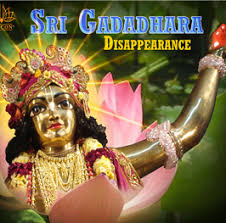
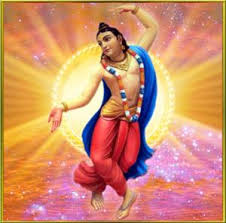
From the time that he was a boy, Gadadhara Pandita was always in the association of Sri Caitanya Mahaprabhu. Sri Gadadhara Pandita’s father’s name was Sri Madhava Misra; his mother’s name was Sri Ratnavati Devi.
They lived close to the house of Jagannatha Misra in Mayapura. Sri Ratnavati Devi looked upon Sacidevi as if Sacidevi were her big sister. The two of them were always spending time with each other. During his childhood pastimes, Gaurahari used to often play with Gadadhara Pandita.
They both went to the village school together to study. Gadadhara Pandita was a year younger than Gaurahari. Gadadhara had so much affection for Gaurahari that he could not leave his company even for a moment.
In the Gaura-ganodesa-dipika it has been explained by Kavi Karnapura that in Vraja-lila Sri Gadadhara Pandita was the daughter of Vrsabhanu—Srimati Radharani. This is confirmed in the notebooks of Svarupa Damodara as well as in the songs of Sri Vasudeva Ghosa Thakura.
According to Sri Caitanya Caritamrita: “No one can describe the characteristics and ecstatic love of Gadadhara Pandita. Therefore another name for Sri Caitanya Mahaprabhu is Gadadhara Prananatha, “the life and soul of Gadadhara Pandita.” No one can say how merciful the Lord is to Gadadhara Pandita, but people know the Lord as Gadaira Gaura, “the Lord Gauranga of Gadadhara Pandita.”
Gadadhara Pandit also took the renounced order of life and went to Jagannatha Puri to be with Lord Caitanya. Accepting ksetra sannyasa (a renunciate who never leaves the dhama), he served the Deity of Tota-Gopinatha with full love and devotion.
Regularly, Sri Krishna Caitanya came to relish Sri Gadadhara’s rasika reading of Srimad Bhagavatam. Lord Caitanya concluded His manifest pastimes “by entering the Deity of Tota-Gopinatha.
Although Gadadhara Pandit was barely forty-eight when the Lord departed, he quickly became old because of the intense anguish he felt in separation from his beloved Lord Gaurasundara. He couldn’t stretch his arms to offer a garland to his Deity. Understanding His servant’s difficulty, Sri Tota-Gopinatha sat down to facilitate Gadadhara’s loving service. To this day, Sri Tota- Gopinatha is the only sitting Deity of Krishna.
According to some authorities, a short time after Lord Caitanya’s disappearance Sri Gadadhara Pandit joined His eternal pastimes by entering his beloved Deity of Tota-Gopinatha. His danta (tooth) samadhi stands near the Vamsi Gopala temple in Vrndavana.
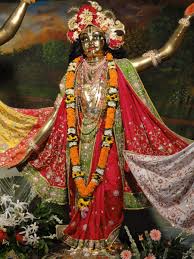
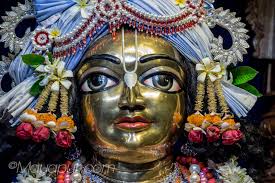
Class by H.H.Giriraj Swami Maharaj
Posted by Iskcon Orlando on Sunday, June 21, 2020
Giriraj Swami read and spoke from Srimad-Bhagavatam 7.5.12.
At this moment, we are watching a constant stream of broadcasts revealing violence against African Americans. The videos are clear evidence of systemic racism in America, and any thoughtful person, devotee or not, cannot help but feel angry. Yet many ISKCON community members I have spoken with recently are confused about how we should respond. […]
The post What the Gita Says About Anger appeared first on ISKCON News.

Should we join the protests? Should we speak out against a government that oppresses black men and women and attacks those wishing to publicly object to such racism? As devotees, should we protest at all? Is meddling in politics the business of Vaishnavas? Yet if we decline, are we not part of the apathy that perpetuates such injustice?
The Bhagavad-Gita is a theological and philosophical classic. In 700 concise verses, it summarises the conclusions of the Vedas, ancient scriptures written approximately 5000 years ago in the Sanskrit language. It covers topics ranging from religion to relationships, science to sociology, leadership to lifestyle management: the keys to all aspects of life, the universe […]
The post Gita Life Online Course Taught by Sutapa Das, UK appeared first on ISKCON News.
Covid -19, a virus that has taken the world by storm, has inconvenienced many and has taken away precious lives. It continues to stay on giving newer challenges to the society at large. People all over the world are trying their best to cope with the new normal, continue to fight in solidarity and are […]
The post 10,800 People Attend ‘Gita Made Easy’ 18-Day Online Course appeared first on ISKCON News.
Why did Lord Rama send agents undercover to hear what people were saying about him? Was Lord Rama doing that to show an example as a king, to have a pulse of his reputation among the citizens, or was it because he is the Supreme Person and concerned people were harming themselves by thinking ill of him? Or some other reason?
Answer Podcast
The post Why did Rama spy on his own citizens? appeared first on The Spiritual Scientist.
 Srila Prabhupada expressed his appreciation for his father in his dedication to his book Krsna, the Supreme Personality of Godhead, “To My Father, Gour Mohan De (1849-1930)”—“A pure devotee of Krsna, who raised me as a Krsna conscious child from the beginning of my life. In my boyhood ages he instructed me how to play the mrdanga. He gave me Radha-Krsna vigraha to worship, and he gave me Jagannatha ratha to duly observe the festival as my childhood play. He was kind to me, and I imbibed from him the ideas later on solidified by my spiritual master, the eternal father.”
Srila Prabhupada expressed his appreciation for his father in his dedication to his book Krsna, the Supreme Personality of Godhead, “To My Father, Gour Mohan De (1849-1930)”—“A pure devotee of Krsna, who raised me as a Krsna conscious child from the beginning of my life. In my boyhood ages he instructed me how to play the mrdanga. He gave me Radha-Krsna vigraha to worship, and he gave me Jagannatha ratha to duly observe the festival as my childhood play. He was kind to me, and I imbibed from him the ideas later on solidified by my spiritual master, the eternal father.”
As devotees, we try to encourage and facilitate our children’s Krishna consciousness, as Prabhupada’s father did with him—an effort that is solidified when our children find their eternal spiritual masters.
Later, Srila Prabhupada wrote to one of his disciples, “You have accepted me as father, so I have also accepted you as my dear and real son. Relationship of father and son on spiritual platform is real and eternal; on the material platform such relationship is ephemeral and temporary. Although I cannot give you anything as father, still I can pray to Krishna for your more and more advancement in Krishna consciousness. Your sincerity and service mood will always help you in advancing your genuine cause.”
We are indebted to all our fathers, biological and preceptorial. To those still with us, we wish you Happy Father’s Day. To those who have left us, we love you and miss you, and we shall try to act in such a way as will please you—and Krishna, the Supreme Father.
Hare Krishna.
Yours in service,
Giriraj Swami
Queens Park, Toronto
Beat Sticks
It was a pleasure, and always will be—a pleasure—to deliver classes on the science of bhakti. I am in my element as it brings me closer to guru and Krishna. We have begun a new chapter in the study of the Bhagavatam, Canto 10, Chapter 25, where Vasudeva, the father of Krishna, expresses the realizations that his two offspring, Krishna and Balarama, are actually Divine mystics; creators of the world, and pradhana—energies of the world. It was fun to explore this subject.
A second class, by way of zoom, dealt with the topic of how to relate to people of varying religious backgrounds. This live-streamed presentation was fun, as we explored verses from the Bhagavad-gita, Chapter 17, where the Gita student gets to filter faith through the three modes of nature.
Ultimately, we don’t want to resort to being judgemental; when it comes to a review of different paths. One path can be strong, another muddy, another dry and uneven, but our goal is to reach the final destination.
The biggest challenge with various faith groups is that theymaintain respect for each other. We must see each other as good neighbours, and not condemn one another. Where there is belligerence—we can perceive this as ignorance. Interfaith sessions can be healthy. The meeting of the mature.
Tonight’s walk took Aisvarya and myself to Queens Park. Our drum did not arrive. Corrado took sick so we sat on the grass and sang to the beat of sticks. Spiritualists can beat sticks but not each other.
May the Source be with you!
5 km
Allen Gardens, Toronto
Combining Walking and Kirtan
Corrado cycled over to Allen Gardens, with the mrdunga drum strapped to his back, and waited there for us walkers. This is a new strategy we’re trying. Each night, after our serenade of sorts (musical display at our stairwell facing the public), those on foot will reach a different park, get down on the grass and start chanting away. Corrado’s lugging the drum by his bicycle saves us time and a burden.
We reached the garden park, which is just across the street from our old temple/ashram, at 187 Gerrard Street. I was surprised by the occupants visiting this green space. In the ’70s practically all who hung out there were of a very challenged, homeless type—heavy on drugs and alcohol. Well, things have not completely changed but we did see a whole lot of decent families.
In any event we sat down, chanted and swayed to the beat of the drum. We kept respectful distance from each other. One family, who are members of our community, joined us for the kirtan. It has become almost a habit to take time to reflect upon the green we are sitting on, and then, at some point, find our eyes drawn upward to the sky of pure blue.
The evening hours are the best for people, just before dusk. The heat is behind them. Coolness has arrived. It is wind-down time. It can’t get any more pleasant.
When I returned from the kirtan, news came online about one of our colleagues, a monk from India, Bhakti Caru Swami. He is Covid 19 positive and is in critical condition. It was an unsettling night. Lots of praying. https://iskconnews.org/bhakti-charu-swami-hospitalized-for-covid-19,7395/
May the Source be with you!
7 km
Giriraj Swami discusses Srila Bhaktivinoda Thakura and Srila Gadadhara Pandita on their disappearance day.
Posted by David Nrsimhananda Shapiro on Friday, June 19, 2020
Answer Podcast
Video:
The post QA on racism Q 7 When animals of one group don’t include animals from another group, is that racism? appeared first on The Spiritual Scientist.
Starting from Thursday 18th June 2020, Akhandadhi das ACBSP has been presenting live on Facebook (https://www.facebook.com/events/712689826170459/) and YouTube (https://www.youtube.com/c/TheAtmaParadigm), the second of four series on ‘The Atma Paradigm.’ This ground-breaking webinar series shines the light of Srimad Bhagavatam philosophy onto modern scientific findings, asking the question, what would science look like if we agree that consciousness […]
The post Atma Paradigm Webinar Series with Akhandadhi Das appeared first on ISKCON News.
As ISKCON GBC member Bhakti Charu Swami struggles in the USA with COVID-19, devotees around the world are deep in prayer for his rapid recovery. Kirtan Fest Global for Bhakti Charu Swami is an opportunity to pray together. The ISKCON Harinam Sankirtan Ministry, and ISKCON Ujjain invite devotees to participate in Kirtan Fest Global […]
The post Kirtan Fest Global for Bhakti Charu Swami appeared first on ISKCON News.
A video by BB Govinda Swami Media.
The post Kirtan for Bhakti Charu Swami’s Recovery 19 June 2020 by BB Govinda Swami appeared first on ISKCON News.
A video by ILS Global. ISKCON Leadership Sanga, Sri Dham Mayapur. Gaurapurnima 2020, Day 1.
The post “The Only Hope for this World”: Presentation by Bhakti Charu Swami, at the ILS 2020 Seminar appeared first on ISKCON News.
Fifty years ago, a 70-year-old spiritual teacher from India arrives in the West and settles among the hippies of New York’s Lower East Side. From a tiny storefront, A.C. Bhaktivedanta Swami starts a revolution of consciousness influencing tens of thousands in the U.S. and worldwide. But what happens to his movement after their charismatic leader’s […]
The post The Joy of Devotion – Full Documentary appeared first on ISKCON News.

Fifty years ago, a 70-year-old spiritual teacher from India arrives in the West and settles among the hippies of New York’s Lower East Side. From a tiny storefront, A.C. Bhaktivedanta Swami starts a revolution of consciousness influencing tens of thousands in the U.S. and worldwide. But what happens to his movement after their charismatic leader’s passing? Will it survive? Will it change? Can an ancient Eastern spiritual tradition be relevant in the modern 21st century?
Please share the joy and help making more films by donating here: https://www.paypal.com/donate/?token=...
A film by Karuna Productions (www.karunaproductions.com)
Executive Producers: Bhakti Charu Swami, Anuttama Dasa, Pancharatna Das. Producer-Director: Krisztina Danka, Ph.D. Cinematography: Filip Cargonja, Denes Doboveczki Editor: Szabolcs Guth
A video by ISKCON Desire Tree.
The post Different Types of Yogis or the Ladder of Yogic Process appeared first on ISKCON News.
Today w e are observing the disappearance day of Srila Bhaktivinoda Thakura and Sri Gadadhara Pandita. I first learned of Srila Bhaktivinoda Thakura when I visited the Boston temple. At that time there were only two published books in ISKCON: the abridged edition of Bhagavad-gita As It Is, published by Macmillan, and Teachings of Lord Chaitanya, published by ISKCON. And at the front of Teachings of Lord Chaitanya was a series of very dignified black-and-white photographsof Srila Prabhupada, Srila Bhaktisiddhanta Sarasvati Thakura, Srila Gaurakisora dasa Babaji, and Srila Bhaktivinoda Thakura. Under the photograph of Srila Bhaktivinoda Thakura was a caption: “The pioneer of the program for benedicting the entire world with Krishna consciousness by the instructions of Lord Chaitanya.” I understood from the caption that Srila Prabhupada was continuing the work of Srila Bhaktivinoda Thakura, and that we were able to come in touch with Krishna consciousness in part because of Srila Bhaktivinoda Thakura.
e are observing the disappearance day of Srila Bhaktivinoda Thakura and Sri Gadadhara Pandita. I first learned of Srila Bhaktivinoda Thakura when I visited the Boston temple. At that time there were only two published books in ISKCON: the abridged edition of Bhagavad-gita As It Is, published by Macmillan, and Teachings of Lord Chaitanya, published by ISKCON. And at the front of Teachings of Lord Chaitanya was a series of very dignified black-and-white photographsof Srila Prabhupada, Srila Bhaktisiddhanta Sarasvati Thakura, Srila Gaurakisora dasa Babaji, and Srila Bhaktivinoda Thakura. Under the photograph of Srila Bhaktivinoda Thakura was a caption: “The pioneer of the program for benedicting the entire world with Krishna consciousness by the instructions of Lord Chaitanya.” I understood from the caption that Srila Prabhupada was continuing the work of Srila Bhaktivinoda Thakura, and that we were able to come in touch with Krishna consciousness in part because of Srila Bhaktivinoda Thakura.
As the years passed and I came to learn more about Srila Bhaktivinoda Thakura, I began to see more and more how the Krishna consciousness movement brought by Srila Prabhupada to the West and expanded throughout the world was a continuation of the work of Srila Bhaktivinoda Thakura and the result of his desire. So we are all indebted to Srila Bhaktivinoda Thakura, and we are intimately connected with him through parampara.
Lord Chaitanya predicted, prthivite ache yata nagaradi grama, sarvatra pracara haibe mora nama: “In every town and village of every country of the world, My name [Krishna’s name] will be preached.” Although Lord Chaitanya made this prediction more than five hundred years ago, even His followers have sometimes been bewildered about how it would be fulfilled. Some of them even thought the prediction was metaphorical or abstract. But Srila Bhaktivinoda Thakura had faith in the order and the desire of Sri Chaitanya Mahaprabhu, and through his books he began the work of spreading Krishna consciousness and the holy name of Krishna throughout the world. In particular, in 1896, the year of Srila Prabhupada’s birth, he wrote a book called Sri Chaitanya Mahaprabhu: His Life and Precepts and distributed it to libraries worldwide.
Bhaktivinoda Thakura passed on his desire, which was Sri Chaitanya Mahaprabhu’s desire, to his son Srila Bhaktisiddhanta Sarasvati Thakura, and Srila Bhaktisiddhanta, though he never left India, passed on the same desire to his disciples. In particular, he gave the order to Srila Prabhupada to preach Krishna consciousness in the English language, which even then was the universal language in the Western world, and in the whole world.
Srila Bhaktivinoda Thakura predicted, “Very soon the unparalleled path of hari-nama-sankirtana will be propagated all over the world.” He foresaw the day when Vaishnavas from all over the world would come to Mayapur and chant Jaya Sacinandana together with the Bengali Vaishnavas, Gaudiya Vaishnavas. And Srila Prabhupada was the one who acted to fulfill the desire and prediction of Srila Bhaktivinoda Thakura:
“Oh, for that day when the fortunate English, French, Russian, German, and American people will take up banners, mridangas, and karatalas and raise kirtan through their streets and towns. When will that day come? Oh, for the day when the fair-skinned men from their side, chanting, ‘Jaya Sacinandana ki jaya,’ will extend their arms and, embracing devotees of our country coming from our side, treat us with brotherly feelings. When will that day be?” (Srila Bhaktivinoda Thakura, in Sajjana-tosani)
Srila Bhaktivinoda Thakura had a house in Godrumadvipa, across the Jalangi River from Mayapur, and he used to chant on his balcony there. One day he looked across the river and had a vision of an effulgent city with a wonderful temple, an adbhuta mandira, at its center. He desired that this wonderful temple and splendorous city should come into existence, and here too Srila Prabhupada has engaged his followers to fulfill the prediction and desire of Srila Bhaktivinoda Thakura and Sri Nityananda Prabhu:
eka adbhuta mandira ei haibe prakasa
gaurangera nitya-seva haibe vikasa
“An astounding temple will appear and will engage the entire world in the eternal service of Lord Chaitanya.” (Sri Navadvipa-Mahatmya, Parikrama Khanda, Ch. 4)
Srila Bhaktivinoda Thakura is also the one who discovered the actual birthplace of Sri Chaitanya Mahaprabhu in Mayapur. Over centuries of the Ganges flooding and changing course, the location of Mayapur, the birthplace of Sri Chaitanya Mahaprabhu, was lost. Bhaktivinoda Thakura studied old maps and consulted different local people, and ultimately he determined the actual location.
Srila Bhaktisiddhanta Sarasvati Thakura carried forward the idea of the Vedic city in Mayapur, and he had some of his householder disciples build small houses there. But again, it was really Srila Prabhupada who carried the desire of Srila Bhaktivinoda Thakura forward to the point where there is now a budding metropolis in Mayapur. He was very enthusiastic about the project, and now his disciples are working to make this magnificent vision a physical reality.
Srila Prabhupada had to struggle to get some land in Mayapur. Eventually it was Tamal Krishna Goswami who was able to secure the purchase of the land. Then Srila Prabhupada designed, or gave the basic idea for, the first building to be constructed and brought the drawings with him from London to Calcutta.
But there had been flooding in Mayapur, and sometimes the flooding there is very severe. Therefore—although Srila Prabhupada was so enthusiastic about the project and had struggled so hard to get the land in Mayapur and had personally brought the plans for the first building there—still, right when we were at the peak of our enthusiasm, he raised the question: “What will happen if the Ganges floods? What will happen to the temple, to the project?”
He suggested that we not build the temple in Mayapur and discussed different arguments for and against his suggestion. Then he presented the idea that we should build the temple at Birnagar, the birthplace of Srila Bhaktivinoda Thakura. We were completely bewildered, and when Srila Prabhupada argued so strongly that we should build the temple at Birnagar because it would be safe from the floods there, we were swayed by His Divine Grace’s argument. But in the end he brought us back to the conclusion that we should go ahead with the project in Mayapur. “If you all build this temple,” he declared, “Srila Bhaktivinoda Thakura will personally come and take you all back to Godhead.”
So that is both Srila Prabhupada’s and Srila Bhaktivinoda Thakura’s desire—that we build a wonderful temple and go back to Godhead. And by following in Srila Prabhupada’s footsteps, we are also following in the footsteps of Srila Bhaktivinoda Thakura.
Another important program of Srila Bhaktivinoda Thakura was nama-hatta. In fact, before Srila Bhaktivinoda Thakura built his house in Godrumadvipa, he built a bhajana-kutira near the site of the house, in Surabhi-kunja, which is the original place where the nama-hatta was started by Nityananda Prabhu. Srila Bhaktivinoda Thakura got his inspiration for the nama-hatta there.
The basic idea of the nama-hatta is that grihastha Vaishnavas, householder devotees, preach. By definition, householders will usually have a spouse, children, work, and a home. But they should still preach; they should use all of their spare time to preach. Srila Bhaktivinoda Thakura himself was a householder for many years, and he would lead his householder devotees through the streets, performing sankirtana, and then they would hold festivals, large gatherings where Srila Bhaktivinoda Thakura would preach bhagavata-dharma and the glories of the holy name. He published a book, Sri Godruma Kalpatavi, about his nama-hatta program, which included reports of some of his preaching events; the harinama-sankirtana and bhagavata-dharma discourses were ecstatic and the nama-hatta was spreading very nicely. During Srila Prabhupada’s presence His Holiness Jayapataka Swami and other ISKCON devotees revived the nama-hatta in Bengal and Orissa, and now it has spread all over the world.
So, Srila Bhaktivinoda Thakura set a great example for us all. Although he had so many responsibilities—as a magistrate, as superintendent of the Jagannatha temple, as a husband, as the father of ten children—still he did so much service. He was expert at utilizing his time so that he could serve Krishna more. He would generally take rest at eight o’clock at night and get up at midnight to write. He wrote about one hundred books. He was expert in many things, including fulfilling his duties as magistrate. He would dispose of his cases very quickly. Judges are also judged—by how quickly they dispose of their cases and by how many of their judgments are overturned and appealed. Srila Bhaktivinoda Thakura disposed of his cases quickly and expertly.
Somehow, with so many duties and responsibilities and so many children, Srila Bhaktivinoda Thakura was able to write many, many books and spread Krishna consciousness widely. We can take inspiration from him and keep in our minds and hearts his glorious example: that even in our various, demanding positions, we can do more and more for Krishna and for the disciplic succession, for Srila Bhaktivinoda Thakura and for our spiritual master.
One of Srila Bhaktivinoda Thakura’s books, Sri Harinama-cintamani, has as its subject, as the title suggests, the touchstone of the holy name. The book is a dialogue between Lord Chaitanya and Haridasa Thakura. They begin by discussing the holy name in general. Then they consider the ten offenses against the holy name, because the efficacy of the name depends on the quality of the chanting. In her prayers to Lord Krishna, Queen Kunti says:
janmaisvarya-sruta-sribhir
edhamana-madah puman
naivarhaty abhidhatum vai
tvam akincana-gocaram
“My Lord, Your Lordship can easily be approached, but only by those who are materially exhausted. One who is on the path of [material] progress, trying to improve himself with respectable parentage, great opulence, high education and bodily beauty, cannot approach You with sincere feeling.” (SB 1.8.26) In the purport, Srila Prabhupada remarks that the scriptures state that “by once uttering the holy name of the Lord, the sinner gets rid of a quantity of sins that he is unable to commit. Such is the power of uttering the holy name of the Lord. There is not the least exaggeration in this statement. . . . But there is a quality to such utterances also. It depends on the quality of feeling. A helpless man can feelingly utter the holy name of the Lord.”
Ordinary devotees like us have to practice to come to the stage of such chanting, and in particular we must be aware of the ten offenses and try to avoid them. In Harinama-cintamani Srila Bhaktivinoda Thakura discusses each of the ten offenses one by one in depth and in detail. First he defines and describes what constitutes each offense; then he explains how to avoid each offense; and then, in case somehow we have fallen into the offense, he discusses how to become free from it and from its damaging effects.
The first offense is sadhu-ninda: blaspheming the devotees who have dedicated their lives to the propagation of the holy name. Ninda means to criticize or to blaspheme. But what is the meaning of sadhu? How do we recognize a sadhu? Srila Bhaktivinoda Thakura explains that in essence a sadhu is one who has taken shelter of Krishna—or the holy name of Krishna, which is non-different from Krishna. He lists twenty-six qualities of a sadhu, as stated in Srimad-Bhagavatam. Then he says that of all the qualities, one is the primary characteristic (svarupa-laksana) and the others are marginal (tatastha). The essential quality of the devotee is that he or she has taken shelter of Krishna (mat-sarana), or the holy name of Krishna. Even if one is lacking in the other qualifications, if one has the single qualification of having taken exclusive shelter of Krishna, he or she is considered a sadhu. On the other hand, if one has the other qualifications but lacks the one qualification of complete surrender to Krishna, then the other qualities have no particular value.
Now that we know who a sadhu is, we can avoid criticizing or blaspheming him or her. Srila Bhaktivinoda Thakura discusses different grounds that people may think are justification for criticizing a sadhu. One is the sadhu’s caste or low birth, but Srila Bhaktivinoda Thakura says that this is not ground for criticizing a sadhu. If one criticizes a sadhu because of his or her low birth or caste, then that critic is involved in sadhu-ninda. Srila Bhaktivinoda Thakura also mentions past sinful activities. If one criticizes a sadhu for past sinful activities, one is involved in sadhu-ninda. Srila Bhaktivinoda Thakura also mentions present traces of sinful activities. In other words, a sadhu may have engaged in sinful activities before he or she got the association of devotees but even after coming to the association of devotees may maintain some last traces of previous bad habits, or by accident may fall down. Even then we do not have grounds to criticize. If we criticize a sadhu for an accidental falldown or for traces of past sinful activities, we are involved in sadhu-ninda.
Then he discusses different categories of asadhus, or nondevotees, so that we can clearly identify them too. In other words, as preachers, do we hear no evil, see no evil, and speak no evil? Do we not speak the truth if we see something is wrong and we want to correct it or protect others from it? No; as preachers we must be able to recognize nondevotees, especially if they are posing as devotees, and help neophyte devotees avoid them. Thus, Srila Bhaktivinoda Thakura lists three categories of persons who are not sadhus but who may be mistaken for sadhus. One is the Mayavadi impersonalist, who thinks that Krishna’s eternal form and holy name are illusory, or maya. Another is the pretender, or dharma-dhvaji, who waves the flag of religion; he is not actually a devotee, but he makes a show of being a sadhu for materialistic ends. And one is the atheist. Srila Bhaktivinoda Thakura says that when one preaches one has to criticize nondevotees and advise innocent devotees to avoid their association and influence. Such criticism does not constitute sadhu-ninda. If ignorant or envious people argue that such criticism is sadhu-ninda, Srila Bhaktivinoda Thakura says, we should avoid their association. Because they are wrongly accusing or criticizing the preacher, they themselves are implicated in sadhu-ninda.
I will give an example. When I was in Madras on Srila Prabhupada’s behalf, I preached more or less the way I had heard him preach, criticizing demigod worshippers and impersonalists. In Madras there were a lot of impersonalists and demigod worshippers, and when I repeated what the Bhagavad-gita said about them, some people began to criticize me for criticizing others. Some said, “You shouldn’t criticize others; you should just state positively what you want to say about your philosophy and activities, but you shouldn’t criticize others.” The criticism of my criticism reached such a point that I actually began to have doubts. I thought, “So many people are saying the same thing, maybe I am doing something wrong.” They even gave the example of the Gaudiya Matha: “They don’t criticize others like you do; they have a nice temple, and every year they have a big celebration of Janmashtami and thousands of people come. Why can’t you be like them?”
So I thought about what they said. I wasn’t really convinced that Srila Prabhupada would want us to be like the Gaudiya Matha, but then again, even people who were our friends, who were sympathetic to us, were saying the same thing: “Don’t criticize others. Just say what you want in a positive way about your own philosophy and activities.” So I wrote to Srila Prabhupada, and His Divine Grace wrote back, “The fact is that I am the only one in India who is openly criticizing—not only demigod worship and impersonalism, but everything that falls short of complete surrender to Krishna.” And he continued, “My guru maharaja never compromised in his preaching, nor will I, nor should any of my students. We are firmly convinced that Krishna is the Supreme Personality of Godhead and all others are His part-and-parcel servants. This we must declare boldly to the whole world, that they should not foolishly dream of world peace unless they are prepared to surrender fully to Krishna as Supreme Lord.”
So that is the mood of the preacher: he or she has to criticize the nondevotees. In the course of criticizing the nondevotees, a preacher may offend people who have sentiments for such nondevotees because they think that such nondevotees are devotees. But what else can we do? This, as Srila Bhaktivinoda Thakura discusses, is not sadhu-ninda; it is in the category of those things that might appear to be offenses but really are not.
There was a vivid example of this once when Srila Prabhupada was walking one morning with Dr. Patel on Juhu Beach. Dr. Patel was praising someone who was definitely not a devotee but who was revered in India as a spiritual leader and teacher, and Srila Prabhupada began to criticize the person and point out the defects in his philosophy and his procedures. Dr. Patel became incensed—very offended and agitated. He began to argue with Srila Prabhupada and was practically shouting at him. And Srila Prabhupada was shouting at Dr. Patel. Srila Prabhupada roared, “I am not saying; Krishna is saying, na mam duskrtino mudhah prapadyante naradhamah: anyone who does not surrender to Krishna is a mudha [fool], naradhama [lowest of mankind].” It became a fierce argument, and Dr. Patel’s friends tried to restrain him. “Swamiji is an old man,” they said. “He has a heart condition; you shouldn’t excite him.” It was like an explosion. Finally Dr. Patel’s friends pulled him away and we reached the spot where we would leave the beach for the temple, and the argument ended.
After that, Srila Prabhupada said, “All right. No more discussion. We will just read from the Krsna book on the morning walks.” So we started to read from the Krsna book. Before this, Dr. Patel would come faithfully every morning and walk with Srila Prabhupada. Often, he would drive Srila Prabhupada to the beach in his car and then they would walk and talk on the beach, or they would walk from the temple to the beach and talk. Now, however, for the first time, Dr. Patel avoided the morning walks with Srila Prabhupada—because of that big argument. But some days later, he was drawn back to Srila Prabhupada. He said to Srila Prabhupada, “We are trained to respect all the accredited saints of India.” And Srila Prabhupada replied, “Our business is to point out who is not a saint.”
So, that is the mood of a preacher. If a preacher criticizes nondevotees who may be revered as saints by many people, he or she is not involved in sadhu-ninda. But if people criticize the preacher for criticizing such nondevotees, those critics may be involved in sadhu-ninda and we should avoid their association—unless we can change them or engage them, like Srila Prabhupada did with Dr. Patel.
Next Srila Bhaktivinoda Thakura says, “All right, if one has committed the offense, what does one then do? What is the remedy?” The specific way to counteract the offense of sadhu-ninda, or vaisnava-aparadha, is to go to the person we have offended and beg the person to forgive us. Generally, the Vaishnava is softhearted and will forgive the offender if he has realized his mistake and is sincerely repenting and earnestly trying to improve.
One may also commit an offense that is not directly against another person. To counteract such an offense, one may confess to other Vaishnavas. There is value to opening one’s heart to other Vaishnavas and admitting one’s offenses.
What Srila Prabhupada criticized about the Christians’ practice of confession was that after they had sinned and confessed, they would often go and commit the same sin again. In other words, the process of confession alone was not sufficient to remove the heart’s desire to sin. But here, if a devotee sincerely repents her or his mistake and confesses and begs for the mercy of the Vaishnavas and then really tries his or her best not to commit the offense again—and continues with the real process of purification, hearing and chanting the holy name—then such confession or admission becomes a part of the process of purification and rectification.
Srila Bhaktivinoda Thakura instructs us that the best way to avoid offense, which is negative, is to go to the other side and be positive. The best way to protect ourselves from sadhu-ninda, for example—from blaspheming or criticizing devotees—is to glorify the devotees, to appreciate and praise them.
So, we can benefit greatly from reading Srila Bhaktivinoda Thakura’s books. Once, a disciple asked Srila Prabhupada about reading books of the previous acharyas: “Srila Prabhupada, I remember once I heard a tape where you told us that we should not try to read . . . Bhaktivinoda’s books or earlier books of other, all acharyas.” Srila Prabhupada clarified, “No, you should read. . . . We are following previous acharyas.”
Of course, for ISKCON devotees Srila Prabhupada’s books are the basis. And if we are well versed in Srila Prabhupada’s books and faithful to Srila Prabhupada, then when we read the previous acharyas we will see how Srila Prabhupada is representing them, as we do with Sri Brhad-bhagavatamrta. So much of what Brhad-bhagavatamrta says about the holy name is exactly what Srila Prabhupada taught us. Thus, reading the book strengthens our faith in Srila Prabhupada. It also clarifies for us the philosophy and principles of devotional service so that we can practice better in the line of Srila Prabhupada. At the same time, the reading makes us more knowledgeable in the scriptures so that we are better equipped to preach.
So, we’re gathered here at the feet of Srila Bhaktivinoda Thakura. I believe he is pleased with our efforts to serve him through his representatives, and we can pray to him to bless us with a drop of faith in the holy name and with a fraction of a drop of his enthusiasm for preaching, so that even amidst our heavy duties and responsibilities we can also find time, as he did, to chant the holy name in the association of other devotees and to spread the mission of Sri Chaitanya Mahaprabhu.
Srila Bhaktivinoda Thakura ki jaya! Srila Prabhupada ki jaya! Nitai-gaura premanandi hari-haribol!
I have only touched a few drops of the nectarean ocean of Srila Bhaktivinoda Thakura. Would any other devotee like to speak something in his glorification?
Kesava Bharati Prabhu: One of the prominent characteristics of Bhaktivinoda Thakura was that throughout his life he had reoccurring diseases. He suffered from rheumatic fever, and he was born in a town that was wiped out by a plague—his whole family. Over time, he underwent many traumas, and so one of the important aspects of his life was how he dealt with difficulties. His life wasn’t laid out on a silver platter. He was born in a very exalted family—descendants of kings, devotional kings—but at the same time, he had to face so many obstacles and difficulties, and in an exemplary way he showed how to take shelter in devotional service, in the holy name, in the lotus feet of Sri Sri Gaura-Nitai, Sri Sri Gaura-Gadadhara, and guru. He confronted and overcame many obstacles. For instance, there was a yogi in Jagannatha Puri who was doing all kinds of nonsense and had the power to make people sick and cause problems for their family members—so many things. Bhaktivinoda Thakura confronted him and put him in jail. He himself went and physically arrested the yogi. Then the yogi cursed him, and in fact Bhaktivinoda Thakura and his family members did become sick. In jail the yogi was saying all sorts of blasphemous things—“Everyone’s going to die; you’re going to die; your family is going to die!” At one point, as he was fighting the yogi within the court, the Thakura realized that the man was carrying his power in his hair—he had all these matted locks. As the judge, Bhaktivinoda Thakura instructed the constables to cut the yogi’s hair, so they cut his hair and the yogi lost his power, and soon thereafter he died in jail. And Bhaktivinoda Thakura, along with everyone in his family, got well.
Also, at that time there was a powerful dacoit movement in Vrindavan—there is always a dacoit movement there—but Bhaktivinoda Thakura went there, and just by his tremendous spiritual power and strength, he cleaned up those dacoits. Anybody who has ever been in Vrindavan knows what that means. Cleaning up the dacoits there is practically impossible. His spiritual strength was just extraordinary.
Bhaktivinoda Thakura attained a prominent position under the British rule when the British were systematically and powerfully convincing people in India that their culture and philosophy were inferior to Western culture and philosophies. Indians weren’t appointed to key positions very often, but Bhaktivinoda Thakura was so good—so pious and so popular wherever he went—that they wouldn’t dare pass him over. And they trusted him. He was so honest, so forthright, and such a wonderful servant that they put him in important positions of authority, and wherever he was posted they wanted him to stay. Throughout, he kept wanting to go to Navadvipa, but his administrative authorities always tried to get him to stay. Even at a time when the ruling government did not favor people like him, Bhaktivinoda Thakura was granted high material status, placed in very responsible positions.
So we can be in any ashrama—grihastha or any other—any position in life, and still develop devotional qualities if we follow the instructions that Bhaktivinoda Thakura gave in Harinama-cintamani—to stop criticizing one another, playing politics with one another, and backbiting one another, and instead to glorify one another, even if the other person is not present. Then we will get the power to serve the cause of Krishna consciousness to our full capacity.
So, Srila Bhaktivinoda Thakura gave us all these different standards and all these priceless examples. Hare Krishna.
Giriraj Swami: Jaya! Srila Bhaktivinoda Thakura ki jaya!
[A talk by Giriraj Swami on Srila Bhaktivinoda Thakura’s disappearance day, June 29, 2003, Dallas, Texas]
Answer Podcast
The post Are the Abrahamic God, who orders killing and enslaving, and the Vedic God the same person? appeared first on The Spiritual Scientist.
Answer Podcast
Video:
The post QA on racism Q 6 Why is racism seen in humans, but not in animals? appeared first on The Spiritual Scientist.
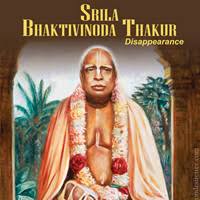

On September 2nd, 1838 on a Sunday in the ancient village of Biranagara (Ulagrama) located in the district of Nadia, Thakura Bhaktivinoda took his birth in the family of Raja Krishnananda Datta, who was a great devotee of Lord Nityananda.
In the village of Biranagara (Ulagrama), Kedaranatha Datta spent his infancy and boyhood while living in the large mansion of his maternal grandfather Mustauphi Mahashaya. In Biranagara he received his elementary education at the primary school started by his grandmother. Later he attended an English school at Krishnanagar that had been established by the King of Nadia,
About that same time Bhaktivinoda Thakura’s uncle, Kasiprasada Ghosh Mahasaya Thakura, who was very advanced in British education, came to Ulagrama after the death of his maternal grandfather. He invited young Kedaranatha to come to his home in Calcutta and continue his schooling there.
In 1856, at the age of eighteen, Kedaranatha Bhaktivinoda began his first year of college in Calcutta. During this time he wrote many articles and essays and had them published in various English and Bengali journals and he also gave many lectures in both English and Bengali.
Thakura Bhaktivinoda had a fine mode of delivering speeches and his lectures were so greatly attractive that he could keep the audience, whatever be their number, absolutely dumb-founded. His speeches were all very fluent and argumentative from the philosophical point of view and he had a nice way of joining the link of their subject matter. He was an expert linguist and knew English, Latin, Urdu, Persian, and Oriya besides Bengali and Sanskrit.
Becoming attracted to the philosophy of Vaishnavism, Thakura Bhaktivinoda would read the Caitanya-caritamrta again and again and thus he became endowed with greater faith and respect for Sri Caitanya Mahaprabhu. In this way he applied his mind very intently to the examination and study of Vaishnava philosophy.
Between the years 1874 and 1893 Thakura Bhaktivinoda wrote several books in Sanskrit such as Sri Krishna-samhita, Tattva-sutra, and Tattva-viveka which was sometimes known as Sac-cid-anandaubhuti. He also wrote many books in Bengali such as his Kalyana-kalpataru and besides those, in the year 1874 he composed his famous Sanskrit work Datta-kaustubham. Much of his time was spent in seclusion chanting the Holy Name of Krishna with great faith and love.
While stationed at Krishnanagara Thakura Bhaktivinoda would go again and again to the present day city of Navadvipa. Later he established the birth site of Sri Caitanya Mahaprabhu and built a beautiful temple.
In October of 1894, at the age of fifty-six, Thakura Bhaktivinoda, against the wishes of his family and the government authorities, retired from his post as Deputy Magistrate. He felt it was too much of an inconvenience on his work of preaching the Holy Name and the glories of Sridhama Mayapura. After his retirement, he came to stay at Surabhi Kunja in Godruma from where he engaged himself in preaching the divine philosophy of Sri Caitanya Mahaprabhu.
At the beginning of the twentieth century Srila Bhaktivinoda Thakura returned to Jagannatha Puri.
On the day of the commencement of the sun’s southern course, June 23, 1914, corresponding to the disappearance of Sri Gadadhara Pandita, just before noon in Jagannatha Puri, the dearly beloved of Sri Caitanya Mahaprabhu, Srila Sacidananda Bhaktivinoda Thakura, having satisfied himself that his mission bore at least some good to the world, departed from this mundane plane for his eternal services to Radha and Krishna in the divine realm of Sri Vrindavan Dhama located far beyond the tiny vision of the conditioned souls of this world.
Thakura Bhaktivinoda’s samadhi ceremony was delayed till the sun began its northern course. At that time his last remains were placed at his home in Godruma in the midst of sankirtana of the Holy Name. It was a pleasant clear day and a grand Vaishnava festival was held with the greatest solemnity in which thousands took part and the Thakura’s divine presence amidst them was perceived by all.

